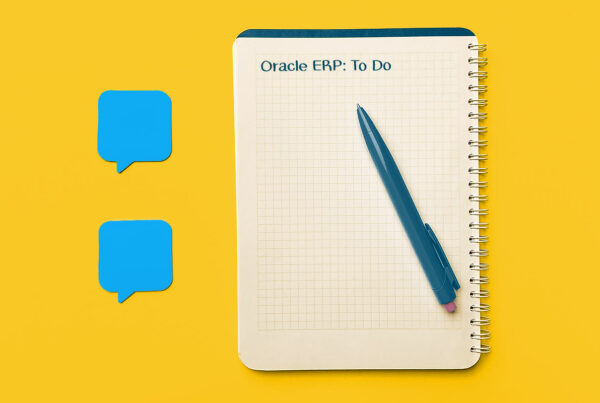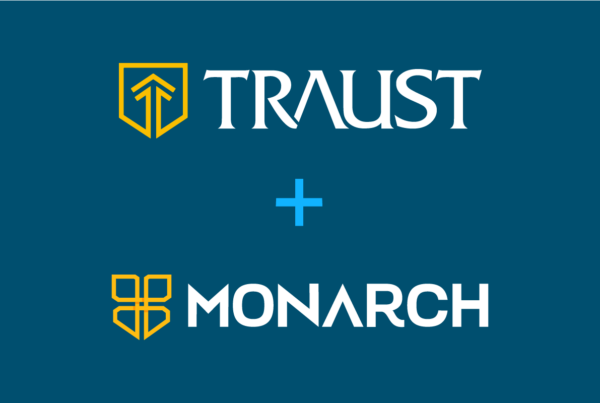The term “killer app” was originally coined in the early days of computing. It refers to the application that first demonstrates the power of a new technology or computing platform. In the case of personal computers (PCs), the original killer app for business was the spreadsheet. The first spreadsheet, VisiCalc, was released for the Apple II computer in 1979, and it was designed specifically for business users. Spreadsheet applications like VisiCalc became the first useful programs that were both business- and people-centric.
Business users quickly adopted the new platform, and they’ve been using spreadsheets ever since. Most companies still use spreadsheets today. However, most businesses now recognize that spreadsheets alone are not a sustainable or scalable way to run their business for the long term.
As companies work to automate repetitive tasks and streamline their operations — part of their broader digital transformation initiatives — they are increasingly shifting from working in spreadsheets to working in purpose-built enterprise applications.
Why Move From Spreadsheets to Enterprise Applications?
Spreadsheets are great at letting you create and organize data in tables. They are commonly used for simple tasks like tracking inventory or managing finances. Power users can even leverage spreadsheets to model scenarios and forecast business results. And while they work great for limited, manual processes, spreadsheets can get quite cumbersome when you need to manage complex operations or automate workflows.
In contrast to basic spreadsheets, enterprise applications provide more complex functionality customized for your industry — or even your specific business. They come equipped with features like security and user management, so employees can access only the data they truly need. And while there are many different types of enterprise applications, there are certain areas that the best ones all focus on – data integration, automation, customizability, and user experience (UX).
Making the move from spreadsheets to dedicated enterprise applications requires more than just new apps, however. It takes a shift in how you and your team think about the work you do. In this post, we’ll discuss everything you need to know about the mental shift required to move your business from working in spreadsheets to deploying an enterprise application.
3 Key Differences Between Spreadsheets and Enterprise Applications
Now that we’ve established why business users should move from spreadsheets to enterprise applications, let’s discuss the key differences between the two.
- Visibility: Enterprise applications bring visibility to business processes and metrics that were once hidden behind the scenes, trapped in inaccessible spreadsheets. Enterprise apps let you track and monitor key business metrics across your entire organization, without having to compare and contrast disparate numbers from different departments. This allows you to take strategic actions in real-time to improve your customer experience and operations.
- Governance: While the spreadsheet is the king of democratization in the office — they are simple to learn while providing powerful functionality — the enterprise application is king of governance. With the ability to create roles and permissions, access controls, and data governance features, you can easily manage who can do what and access which data.
- Analytics: Data visualization is a huge part of using spreadsheets. However, enterprise applications have built-in analytics that allow you to go far beyond simple data visualization. Enterprise applications can collect and make sense of data in real-time — think of sensors on industrial equipment — and help you make better decisions.
Doing Anything vs. Doing Everything
While enterprise applications can be designed to do virtually anything your business needs, you don’t want one that tries to do everything at once. When making the shift from spreadsheets to enterprise applications, too many businesses want apps that try to do too much. But building applications this way can make them difficult to manage, as they will have multiple dependencies and complex logic. To prevent this, you should carefully consider what your application needs to do before deciding how best to structure it.
The most successful enterprise applications focus on what they do best and then provide the right level of integration with other systems to maximize value for your business. For example, if you have an online store that needs to keep track of inventory levels, a CRM system to interact with customers, and an ERP system to handle procurement and payments, you don’t want to find one application to do it all. Instead, look for (or build) enterprise applications that can integrate with each other and make it easier for your employees to get more done.
Data vs. Presentation
In a spreadsheet, you typically see all of your data at once, and you have to scroll and search to find the exact information you’re looking for. But in an enterprise application, you can choose how and where the data is presented, depending on the needs of your users.
An enterprise application is also designed for greater flexibility, allowing you to customize the layout of your data, add new fields and options, customize how the data is displayed, and use complex formatting. This gives you the ability to create dashboards that show exactly what data is important to you, when it was last updated, whether it should be trusted, and so on. All of these extra features allow you to quickly pinpoint exactly what’s going on within your organization and make critical decisions accordingly.
Depending on the needs of your business and your unique user roles, the user interface of an enterprise application may be simple or complex. It can include navigation options like tabs, lists, and panels. The type of data displayed on the screen can also vary: some applications display only summary data while others provide detailed reports and charts. For example, an accounting application might allow users to view transaction details in one tab while summarizing ‘sales by customer’ in another tab.
When making the shift from working in spreadsheets to working in applications, it’s important to understand this distinction between data and presentation. You don’t need to see all of your data all the time. Instead, the best enterprise application design will show you just the right information when and where you and your employees need it.
Making the Leap: Digital Transformation for Your Business
Spreadsheets are great for sorting and analyzing simple, ad hoc data, but they’re lousy for keeping track of complex data like customer relationships or analyzing data from real-time industrial equipment. They also don’t offer features like the ability to manage user permissions and access to sensitive data. Enterprise applications are better suited for those tasks. Not only are they more flexible and customizable, but they’re also better suited to deal with organizational complexity like data management and business analytics.
When you make the shift from spreadsheets to enterprise applications, it can be a big challenge to get everyone in your company on board and thinking beyond tables and charts. However, the benefits are enormous. With an enterprise application in place, you gain control over your data and processes. You can leverage automation to create efficiencies and empower employees to do their best work. And you can easily share data across your organization in real-time, which will help you make better decisions.
Looking for help making the shift from spreadsheets to an enterprise application? Let’s connect.





